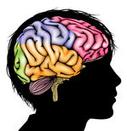




While many therapies look to teach coping and compensating skills or use medication to “fix” various disabilities, our approach provides intense neurological stimulation that produces real change. Utilizing the science of neuroplasticity, our approach stimulates and develops the brain to allow individuals to overcome learning disabilities, social awkwardness, behavior struggles, and time-management difficulties regardless of age.
Understanding our Approach
WHY we do what we do!
CENTRAL NERVOUS SYSTEM (CNS)
The Central Nervous System is the pathway for brain-body connection. It actively identifies, integrates and interprets incoming sensory information from the environment. The CNS must be well organized for ease of learning and life.
NEUROPLASTICITY
Neuroplasticity gives us the ability to change the brain to affect learning and behavior. Neuroplasticity refers to the “ability of the brain to change in response to new demands or sensations from the environment” regardless of age.
NEUROLOGICAL ORGANIZATION
Neurological organization is the term used to define a person’s physical condition when all neural development is complete. This process can be delayed by injury or environmental deprivation, or can also be increased by specific stimulation. The process of neurological organization is interdependent, meaning if lower levels of organization are incomplete, then all succeeding higher levels will be affected.
READINESS
Chronological age and intellect are not the only factors for school/learning/life readiness. Developmental readiness in regard to motor skills, spatial skills, inter-hemispheric functioning and postural reflexes play a crucial role in determining a individual’s readiness for learning.
LEARNING
Learning begins long before a child attends schools. All learning ultimately takes place in the brain, but it is only through the body that the brain receives sensory information from the environment (through our five physical senses) in order to organize, benefit from and express what it learns.
MOVEMENT
Movement in the human body is first affected through the primitive reflexes at birth and plays a vital role in brain development for learning and behavior.
REFLEXES
Primitive reflexes are present at birth and lay the foundation for later functioning. Primitive reflexes should be inhibited by six or twelve months of age to make way for postural reflexes, which serve as a sign of maturity in the Central Nervous System. Postural reflexes influence movement, posture and stability.
